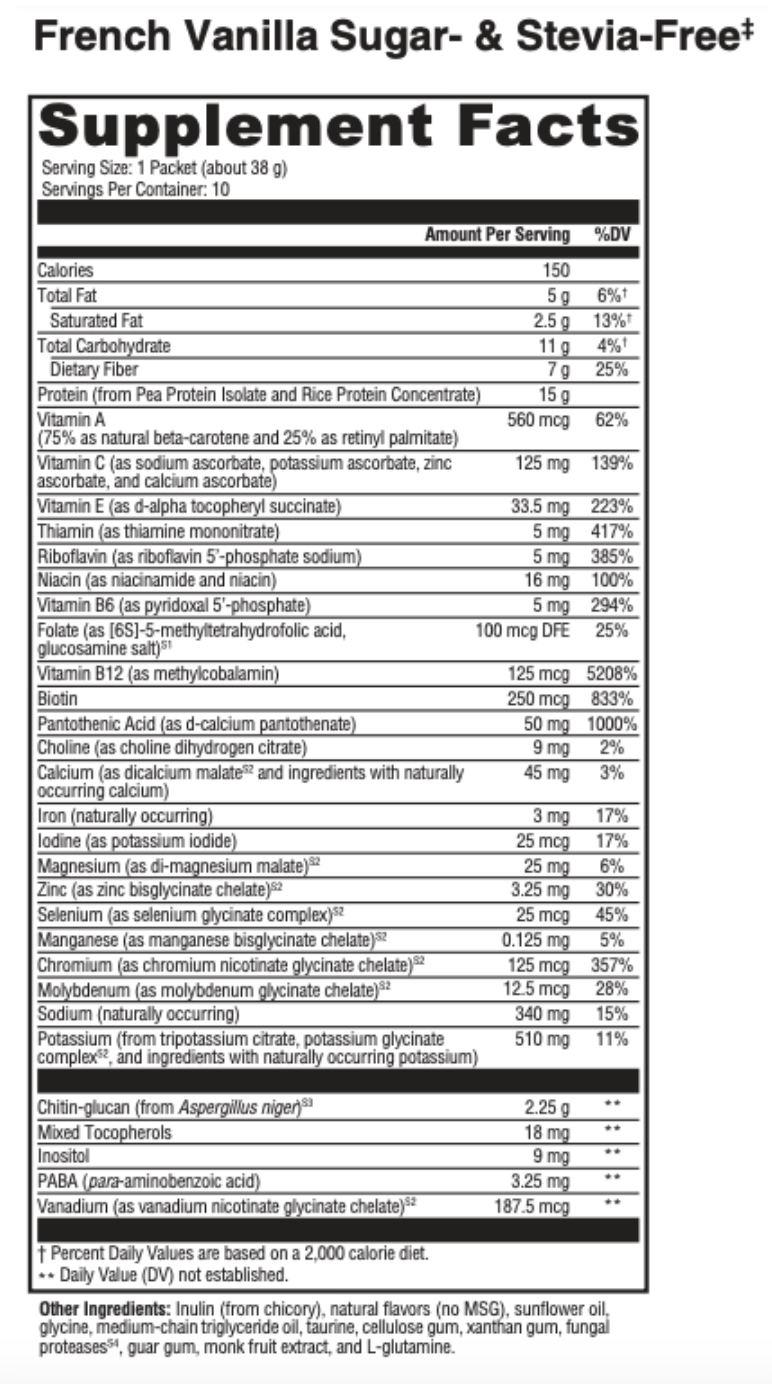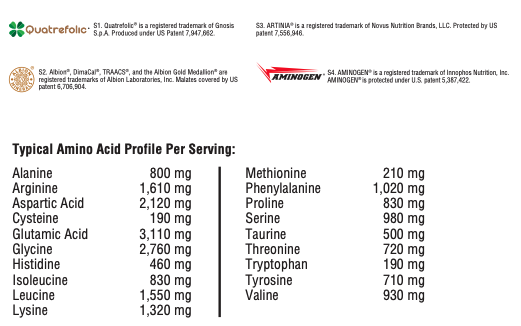Look, Feel & Be Your Best
Start your wellness journey
Book NowSero-Lean Meal is a nutrient-rich shake mix ideal for vegans, individuals sensitive or allergic to soy and/or dairy, or those seeking an alternative source of quality protein. Sero-Lean Meal features Vegan Protein Blend, an all-natural pea and rice protein blend; Aminogen®, a plant enzyme that enhances protein digestibility and absorption; and chitin-glucan, a novel fiber that supports antioxidant systems in the body. This sugar- and stevia-free formula provides an array of micronutrients, including high-potency B12, activated B vitamins, and Albion® TRAACS® chelated minerals (the real amino acid chelate system).*
All Serotonin Nutraceuticals LLC. Formulas Meet or Exceed cGMP Quality Standards
Vegan Protein Blend
Serotonin Nutraceuticals LLC’s proprietary blend of highly digestible pea protein isolate, glycine, taurine, rice protein concentrate, and L-glutamine, is the cornerstone of Sero-Lean Meal. Aminogen® is added to enhance protein digestion and absorption.[1] The combination of pea protein and rice protein achieves an amino acid score of 100% and supports protein metabolism and healthy body composition.*
Protein is required for cell and tissue repair, hormone and enzyme synthesis, and a variety of metabolic functions. It is especially important for maintaining lean body mass during increased physical activity. Protein supplementation has been found to be a determining factor in increasing fat-free mass and exercise-stimulated fat oxidation. Subjects who consumed a significantly higher protein intake (~80 g/d) versus ~59 g/d experienced a significant increase in fat oxidation and fat-free mass with a significant decrease in fat mass and body fat percentage.[3] Studies have indicated that increased protein intake enhances satiety[2,4-6] and supports diminished food intake during subsequent meals.[7] One randomized crossover study suggested that pea protein was superior to milk protein with respect to satiety and intermeal interval.[8] Research has also demonstrated that pea protein stimulates release of cholecystokinin and glucagon-like peptide 1, gastrointestinal hormones that modulate appetite sensations.[9]*
While pea-based protein provides a satisfying and versatile source of protein, it also supports cardiovascular health. Animal studies have suggested that it positively affects lipid homeostasis by modulating gene expression; that is, upregulating genes that affect hepatic cholesterol uptake and downregulating genes that affect fatty acid synthesis.[10,11]*
Chitin-Glucan
Chitin-glucan is incorporated into Sero-Lean Meal to support antioxidant activity and cardiovascular health. Artinia is a purified, insoluble, gluten-free fiber ingredient composed of chitin (N-acetyl-D-glucosamine) and beta(1,3)-glucan chains.[12] Artinia has been researched for its effects on maintaining oxidative balance and artery health, key components of cardiovascular health. A 12-week animal study indicated that chitin-glucan supports cardiovascular health by maintaining healthy arteries, reducing cardiac superoxide anion and liver malondialdehyde (markers of oxidation), and enhancing superoxide dismutase and glutathione peroxidase activity.[13]*
Human trials have revealed significantly positive results as well. A six-week, multicenter, randomized, double-blind, placebo-controlled study (n = 130) of Artinia revealed that 1.5 g/d significantly supported subjects’ LDL cholesterol at levels already within normal range, and 4.5 g/d significantly supported subjects’ natural antioxidant systems and oxidative balance of LDL cholesterol.[14,15] A 28-day pilot study found Artinia to be safe and well-tolerated at a dose of 4.5 g/d.[15] Sero-Lean Meal provides 2.25 g of Artinia per serving. Artinia is a healthy alternative to physiochemical intervention and has not been observed to interfere with absorption of fat-soluble vitamins or antioxidants.*
Micronutrient Support
Sero-Lean Meal delivers a balanced profile of vitamins, minerals, and antioxidants, nutrients vital to supporting the vast array of metabolic processes in the body.[16] B vitamins are present in their bioactive forms, including riboflavin 5’-phosphate, pyridoxal 5’-phosphate, methylcobalamin, and 5-methyltetrahydrofolate as Quatrefolic®.[17]*
Sugar- and Stevia-Free
This formula is sweetened with monk fruit extract in place of sugar or stevia. Animal and human research suggests that superfluous consumption of added sugars increases adiposity, disrupts lipid regulation, and elevates cardiometabolic risk.[18-22]*
Glutamine
The conditionally essential amino acid glutamine is important for replenishing amino acid stores, especially after exercise or stress.[23] Glutamine also supports intestinal cell proliferation and thereby preserves gut barrier function and intestinal health.[24-26]*
Inulin
This soluble fiber is fermented by colonic bacteria into short-chain fatty acids that exert a positive effect on lipid metabolism and support healthy colon transit time.[27,28]*

Mix two scoops (35 g) in 6-8 oz of cold water and consume. Adjust amount of water according to thickness desired. May be used as a snack or meal supplement, or taken as directed by your healthcare professional. Consult your healthcare professional prior to use. Individuals taking medication should discuss potential interactions with their healthcare professional. Do not use if tamper seal is damaged.
Wheat, gluten, yeast, soy protein, animal and dairy products, fish, shellfish, peanuts, tree nuts, egg, artificial colors, artificial sweeteners, and artificial preservatives.
‡This formula is not a low-calorie dietary supplement. Please see the Supplement Facts panel for more details.

